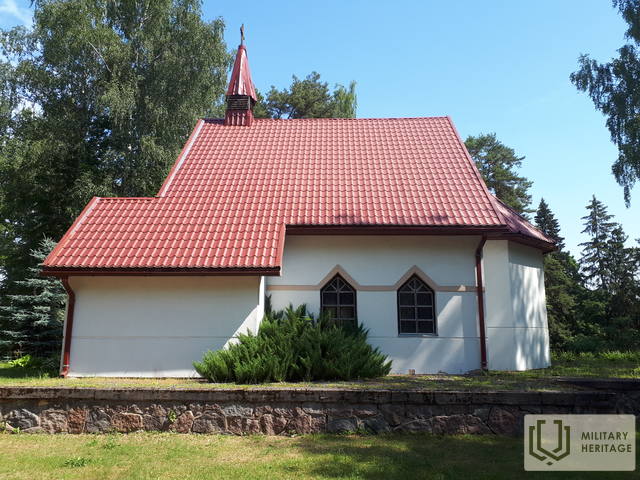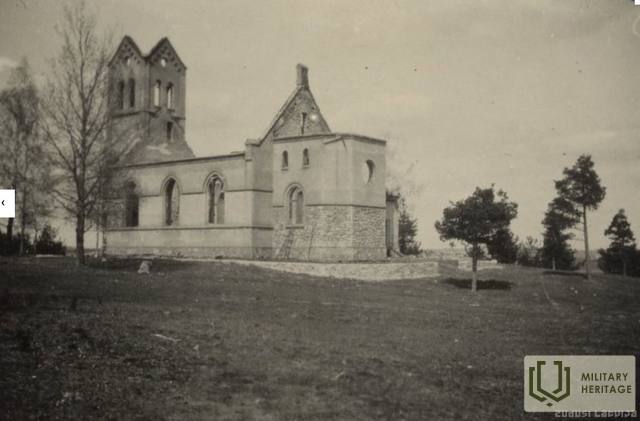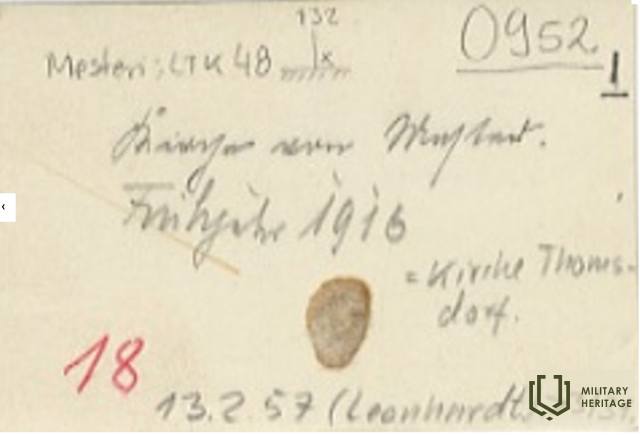Tome Evangelical Lutheran Church Battle site

The first known church in Tome was built in 1644. In 1907–1908, a stone church was built instead of the wooden building with the money of Baron Schilling. In 1956, the church was demolished and a collective farm chicken farm was built from its stones. The church visible today, located between the former Tome elementary school (the school was closed after the school reform, the Ķegums regional museum was established there) and the Tome cemetery, was built between 1999–2003 at the initiative of the Brieži family (USA). The current altarpiece was painted by Sandijs Greiškāns from Ķegums based on a photograph of an altarpiece made by Ata Grunde in 1932. The organ was donated to the church by the Lutheran congregation from Sweden.
In the “Lost Latvia” collection of the National Library of Latvia (LNB), there is a photograph showing the Tome Church during World War I after its destruction in 1916. The Tome Elementary School next to the church also suffered during the battles of the same year.
In the 1938 issue of “Latvijas Kareivī” there is an article “Pa ddimtās zemes istēlstam un ciemiem”, which mentions the Tome Church: … “Furthermore, the road leads past the Tome Church, which was destroyed by the Russians in 1916, thinking it was a German observation post. The small congregation – about 250 members – in 1922 set about renovating the church with great energy and within 10 years built a new tower and altar with an altarpiece by the artist Grunde. Now the church with its white walls, brown window and door frames and neat interior leaves a pleasant impression”.
Used sources and references:
1. Kegum County, www.kegumcounty.com
2. LNB “Lost Latvia”, www.lostLatvia.lv
3. LNB “Periodical”, “Latvian Warrior” 05.07.1938, issue
4. http://tomes-lutheran-church.homeland.com/
Related stories
Life during World War II on the Kegums side
Memories of the now distant royal era flashed through. For the older generation, it would remind them of their own experiences, while for the younger generation, it might bore them.













